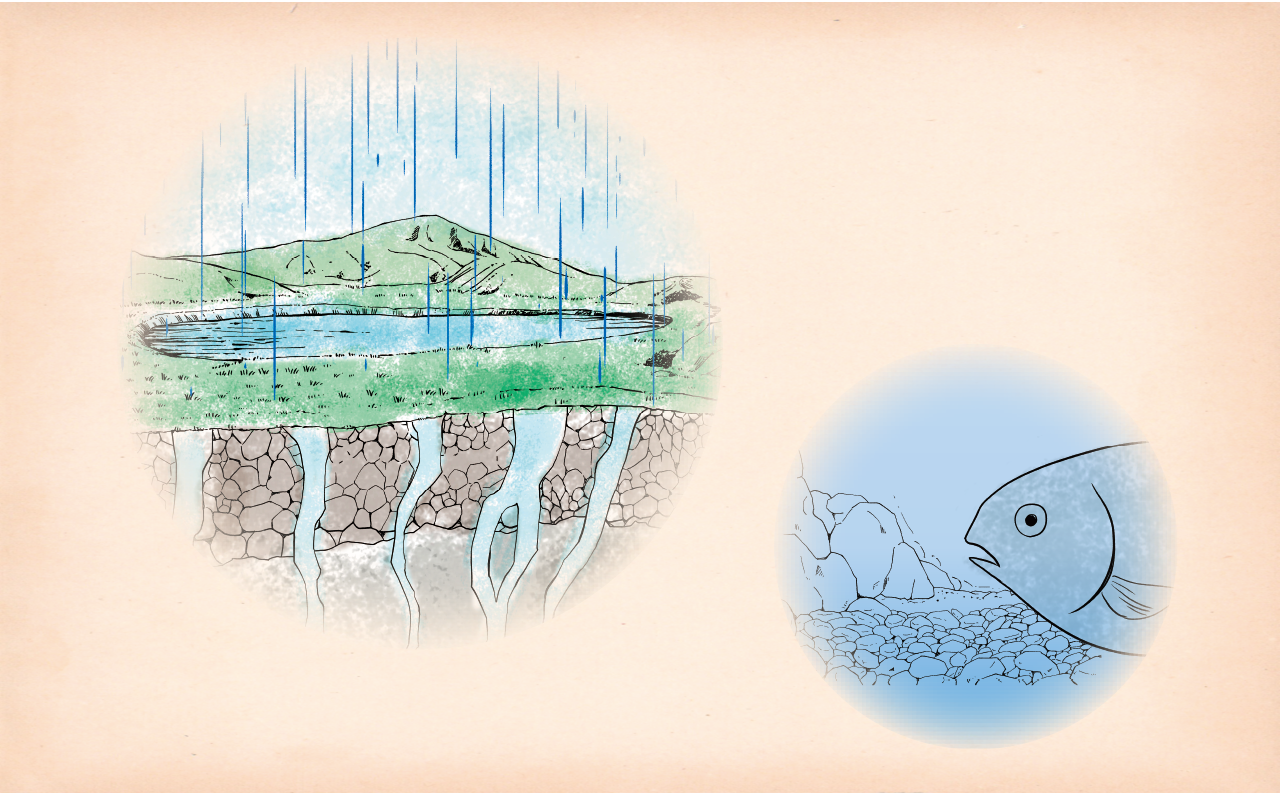Aso's Wildlife and the Rich Water Sources
Common Buzzards and Rodents of Aso
The common buzzard is a bird of prey at the top of the grassland ecosystem. On the grasslands of Aso, one sometimes sees them hovering in the air, taking aim at insects, small birds, and rodents. The large Japanese field mouse, Japanese grass vole and other rodents are abundant among these Aso grasslands, making the location a critical environment for the common buzzard to catch prey and live.
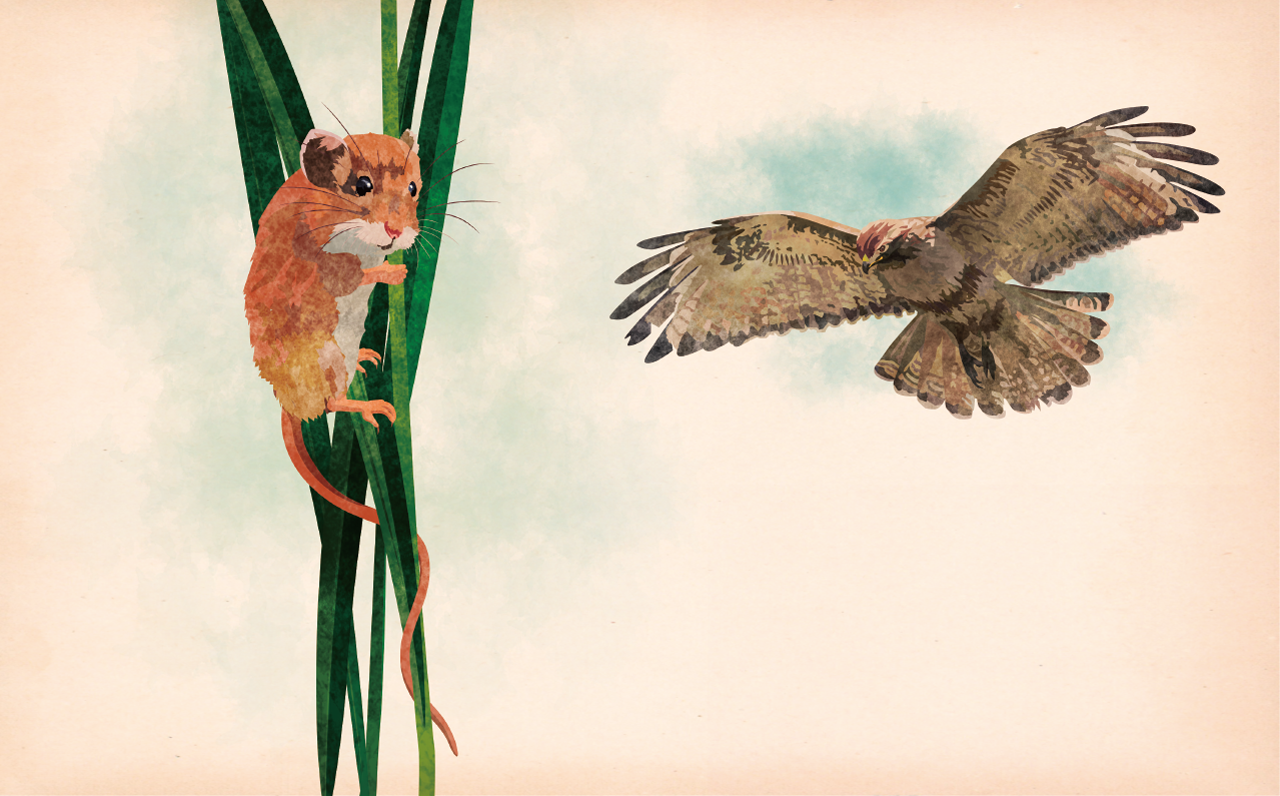
The smallest mouse in Japan. It lives its life on the stems and leaves of grassy plants in grasslands, and builds a spherical nest when rearing young.
Insects of Aso
More than 1,300 species of insects have been confirmed in Aso. Some of these insects inhabit the virgin forests and scrub forests, but most live in the grasslands.
Insects in the butterfly family are said to be particularly abundant. In Kumamoto Prefecture, 115 species of butterfly have been confirmed, and of those, 109 species have been seen in Aso. Cows and horses graze the lands, and thus a unique feature of the insect fauna in Aso is the many insects related to the Scarabaeidae family, commonly known as dung beetles.
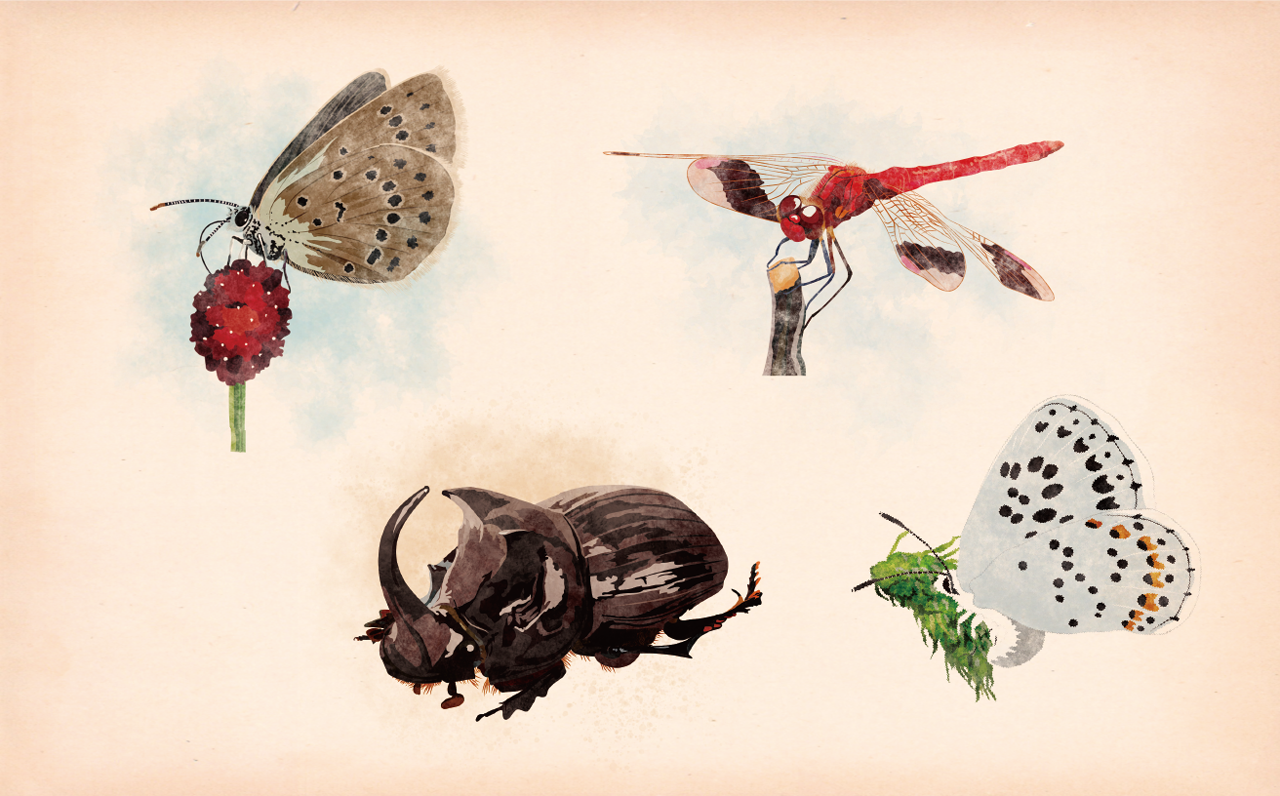
Mammals and Wild Birds of Aso
About 33 species of mammals live in Aso and the surrounding area. Aside from grassland rodents, these include the Japanese serow—a nationally-designated natural monument—and the Japanese water shrew, which has an extremely small population size.
Almost half of the roughly 350 wild bird species confirmed in Kumamoto Prefecture have been seen in Aso and the surrounding area, which is distinguished by its large number of grassland birds such as the chestnut-eared bunting and common cuckoo.
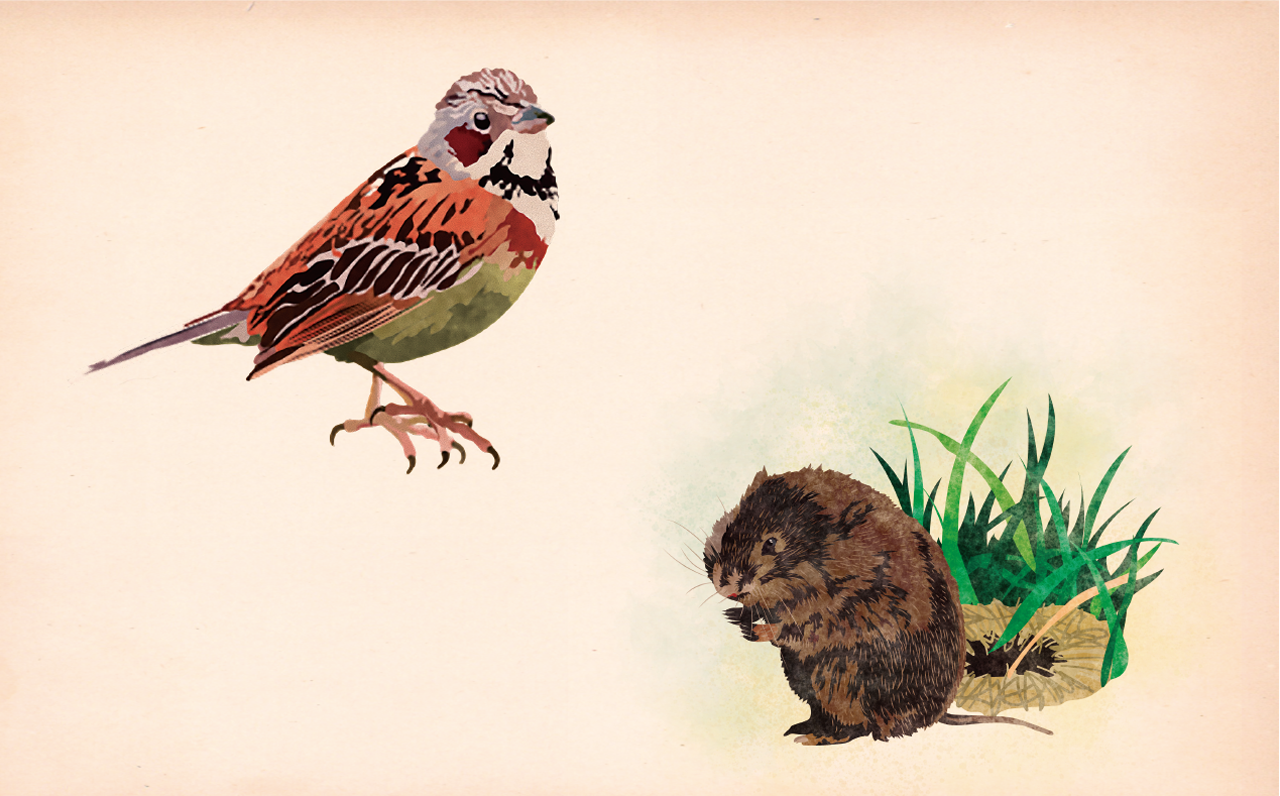
The Bounty of Water in Aso Fountains and Springs
Springs have been confirmed in over 1,500 locations in the Aso region, and this spring water is used to cultivate crops and for daily life. The rice paddies which extend throughout the Aso caldera are symbolic of this plentiful groundwater and spring water.
The term onsen refers to spring water that is heated by underground magma, or which contains special components. Onsen areas exist in 36 locations in Aso, another blessing which would not exist without the Aso volcanoes.
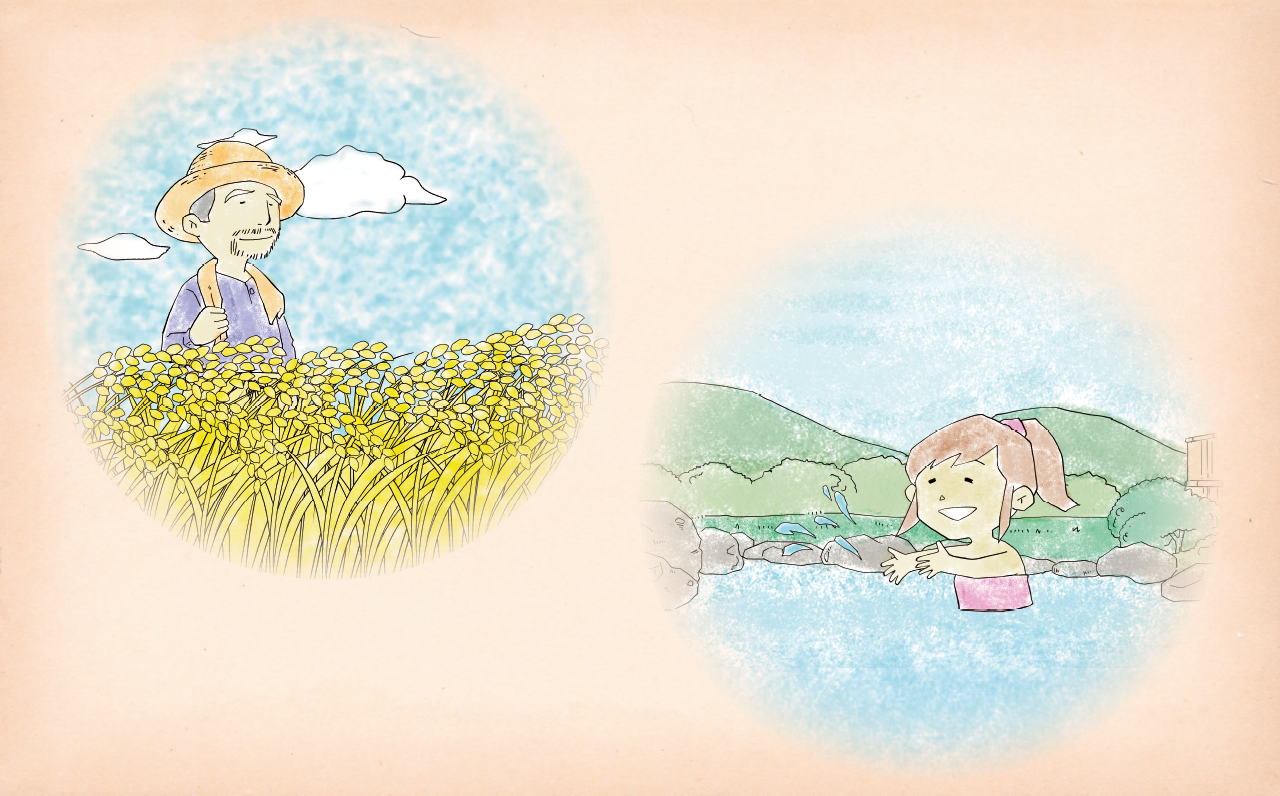
The Bounty of Water in Aso—The "Water Jug" of Kyushu
Annual precipitation on Mt. Aso is 3,250 mm on the average, or about double that of Japan as a whole (roughly 1,700 mm). This water from Mt. Aso becomes groundwater and river surface water, and then flows downstream toward the ocean.
The watershed population is about 2.3 million for the six rivers whose source is Aso. These people, corresponding to 1/6th of the population of Kyushu, use this water for drinking, daily life, and agriculture, and thus Aso is called the "water jug of Kyushu."
